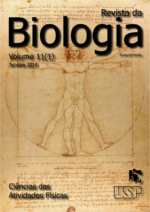Physical Activity and Plasticity of the Skeletal Musculature
DOI:
https://doi.org/10.7594/revbio.11.01.01Keywords:
Endurance, Force, Metabolic pathways, Muscle fibers, Phenotypic plasticityAbstract
The vertebrate skeletal musculature of contemporary humans, responsible for most of their locomotor activity, expresses a common basic structure and mechanism, which resulted from a long evolutionary process. However, the type of physical activity performed may alter these structural and functional patterns. Athletes engaged in different types of training such as velocity, force and endurance express different phenotypes. Athletes engaged in velocity and force sport modalities, like the 100 meters sprint and the shot put, respectively, show predominantly fast twitching muscle fibers, which function in the absence of oxygen (glycolytic pathway), whereas athletes engaging in long term (endurance) modalities, like the marathon, show predominantly slow twitching muscle fibers whose function depends on oxygen (oxidative pathway). These different muscle fiber expressions are known as phenotypic plasticity, which occurs both within the same species as well as among different species.Downloads
Download data is not yet available.
Downloads
Published
2018-04-23
Issue
Section
Revisão
License
We ensure that our journal does not retain any copyright and that these are exclusive of the author(s) of the text. In that sense, we intend to break any restrictions to the published material and to achieve more intensely our goal of communicating science.
How to Cite
Bicudo, J. E. P. W. (2018). Physical Activity and Plasticity of the Skeletal Musculature. Revista Da Biologia, 11(1), 1-7. https://doi.org/10.7594/revbio.11.01.01






